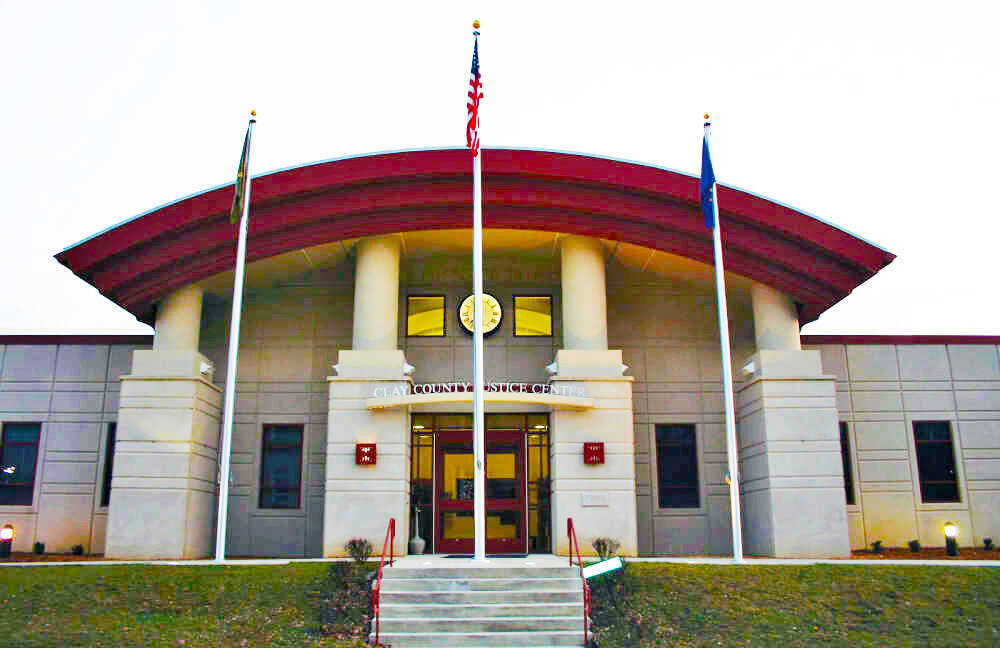TOP STORY OF THE DAY, brought to you free by WICU: Commissioners hear comments from numerous non-residents on proposed jail expansion

No vote was taken Monday on a proposed jail expansion project for the Clay County Justice Center during the recent Clay County Commissioner’s meeting, although rumors had been floating around there would be a decision this month.
Commissioner Paul Sinders told the crowd of approximately 40 people in the Commissioner’s room that he did not know how that rumor started.
Earlier this year, a public hearing was held on Monday, May 24, at 10:30 a.m.
Commissioner Marty Heffner said, at that time, the topic had been in discussion for almost 18 months, adding, “It’s been a fact-finding, number-crunching mission to keep our jail from becoming a financial liability to the county.”
But there were only a handful of people at that meeting, and no one asked any questions or made any comments before it was closed.
Of the 40 people in attendance Monday, 14 people, most from Clay County, were there for other agenda items, with two asking questions regarding the jail.
“Is there a breakdown for each detainee? What are you actually making?” asked Brandy Pierce, who said she was looking for information about U.S. Immigration and Customs Enforcement (ICE). “I can’t find a copy of a previous or current contract to look at the timeline. With the current administration, are you not concerned things could change?”
Reanda Kirchner asked why the Commissioners accepted the only bid for the contract.
The Clay County Jail Partners LLC is a group organized to work with BW Development, Garmong Construction Services, RQAW, and GM Development to develop a proposal and scope of the potential $20 million project.
While the commissioners did not comment during the public comment time (except to clarify the names and residences of the various speakers), County Councilman Larry Moss attempted to answer questions.
Moss said that only one company applied during the process, and the county went with the company. He also explained there is no contract officially with the ICE program.
Still, “there is a contract with the U.S Marshal’s Service,” and they make arrangements for ICE detainees and other federal inmates housed at the local facility when beds are available.
However, ICE detainees are only part of the equation when looking at the fluid population at the CCJC.

Sheriff Paul Harden explains if there are open beds, the facility finds ways to put them to use.
Completed in 2006, the CCJC was built with a maximum capacity of 176 beds, which was believed to be more than adequate at the time for the average 89 local inmates.
Since then, the population at the county jail has grown exponentially due to several reasons, including:
• Changes in the Indiana Code allows the Indiana Department of Corrections to send low-level offenders to serve their time in county jails rather than state prisons,
• Overpopulation at other jail facilities and accepting inmates from transport companies — at the county, state, and federal levels — has allowed the CCJC to fill empty beds when available,
• CCJC has served as a temporary regional detention center for the ICE program since 2013, and
• Required space for offender support services like dedicated classrooms, on-site medical and mental health facilities, and access to clergy, attorneys, and law library materials.
The Indiana Department of Corrections sets a classification threshold for jails at 80%, meaning CCJC is considered full when it reaches 140 inmates. According to previous data provided by the Commissioners, the CCJC is a busy place — with the CCJC consistently exceeding that threshold since 2016.
The other people attending the meeting were from around Indiana and Illinois:
Immigration attorney Emma Mayhern spoke first about representing an 18-year old from Texas seeking asylum from gangs in Mexico. She said he stayed at the CCJC while waiting to be processed for asylum.
Urging the commissioners to delay any final actions on jail expansion, Mayhern said, “The process was an inefficient use of federal funds.”
A petition with over 10,000 signatures, 1,000 of them Hoosiers, against the jail expansion, was also submitted by Mayhern. “As you can see, a public conversation needs to happen before you commit taxpayers.”
(It is unclear if any of the signatures on the petition were from Clay County.)
Members of Cosecha Indiana, an immigrant-led national organization, working towards permanent protection, dignity, and respect for all immigrant workers, also spoke.
Cosecha Indiana Organizer Wendy Catalan Ruana explained how her family had been affected by ICE.
“I’m the daughter of a deported parent. My dad was apprehended for driving without a license and detained at Clay County for over a month,” Catalan said about her father being deported. “I had to drop out of school because of this injustice. This is wrong; this is not human.”
Catalan works with Cosecha Indiana, to help teach immigrants how a bill becomes a law.
“This upcoming year, we’ll be advocating for the driver’s license bill,” she said. “Our communities are not a dollar bill, and we demand respect.”
Mariposa Legal Research Fellow Romelia Solano asked, “how is the Sheriff’s department is going to provide a basic standard of care” for more ICE detainees when they can’t handle the current number of individuals already coming in and out of the facility?”
Several of the group present said there are misleading claims describing those held at Clay as “hardened criminals.” They cited public records requests filed by the National Immigrant Justice Center (“NJIC”) this summer noted 78% of the immigrants detained on the national level have no criminal history.
Moss confirmed the lowest level of charges for a person detained in the ICE program at CCJC was for driving without a license, but most in temporary custody locally had more severe charges.
This jail expansion project potentially includes a new 38,000 square feet 275-300 bed housing pod connected to the south side of the existing facility. It could also create 33 new jobs in the community.
The advocates attending Monday’s Commissioner’s meeting argue the jail expansion should be canceled, which would stop the dehumanization of communities that rely on federal government subsidies from ICE.
Mayhern said Clay County is a proud and welcoming community, and its residents probably don’t want to be connected to the stigma of being involved with ICE.
“As you can see, a public conversation needs to happen before you commit taxpayers to this project,” said Mayhern. “We thank you for listening, and we hope you will continue to listen as you prepare to make difficult decisions. We hope that you will delay any final actions on jail expansion.”
